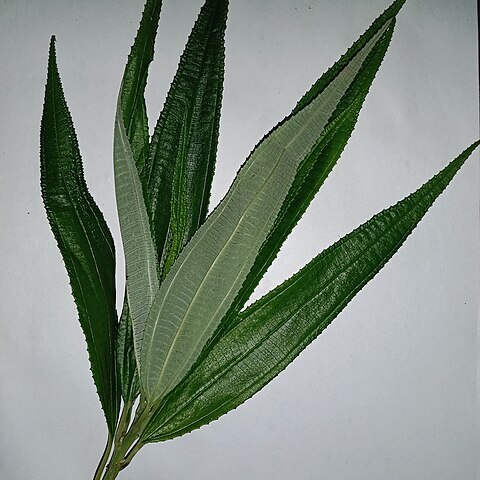A shrub or small tree. It keeps its leaves throughout the year. The small branches are hairy. The leaves are alternate and narrowly sword shaped. They have teeth along the edge and are shiny above but rough underneath. Flowers contain both sexes. They are in groups in the axils of leaves. The fruit is dry.

